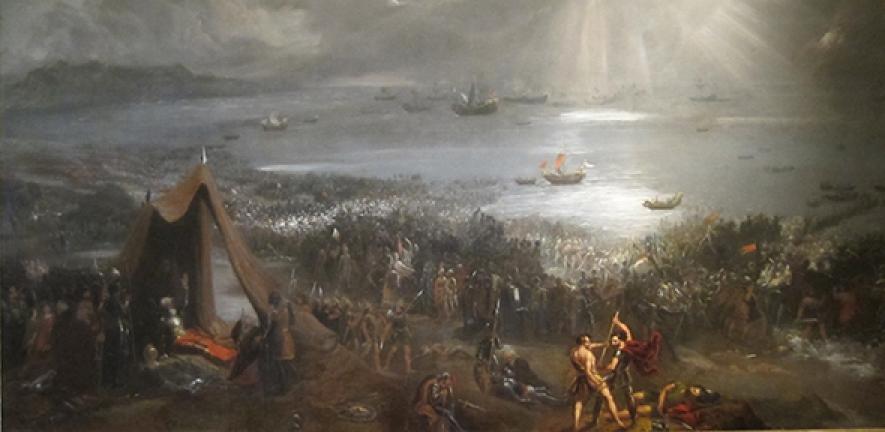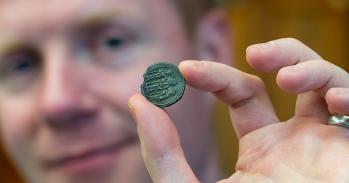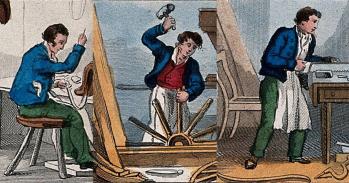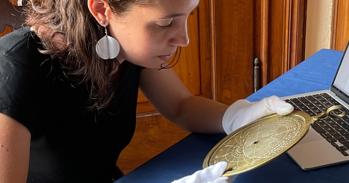
As Ireland marks the millennium of the Battle of Clontarf – portrayed as a heroic encounter between Irish and Vikings which defined the nation’s identity - new research argues that our main source for what happened may be more literary history than historical fact.
As Ireland marks the millennium of the Battle of Clontarf – portrayed as a heroic encounter between Irish and Vikings which defined the nation’s identity - new research argues that our main source for what happened may be more literary history than historical fact.
This was more than a literary flourish, it was a work of a superb, sophisticated and learned author
Máire Ní Mhaonaigh
The standard account of the Battle of Clontarf – a defining moment in Irish history which happened 1,000 years ago this week – was partly a “pseudo-history” borrowed from the tale of Troy, new research suggests.
The findings, which are to be published in a forthcoming book about the intellectual culture of medieval Ireland, coincide with extensive celebrations in Dublin marking the millennium of Clontarf, which was fought on Good Friday, April 23, 1014.
In popular history, the battle has been characterised as an epic and violent clash between the army of the Christian Irish High King, Brian Boru, and a combined force led by the rebel king of the territory of Leinster, Máel Mórda, and Sitric, leader of the Dublin-based Vikings. The disputed outcome saw the Vikings beaten off, but at huge cost. Brian himself was killed, and became an iconic figure and Irish martyr.
According to the new study, however, much of what we know about Clontarf may be rooted not in historical fact, but a brilliant work of historical literature which modelled sections of its text on an earlier account of the siege of Troy.
Rather than a trustworthy description of the battle itself, this account – Cogadh Gáedhel re Gallaibh (“The War Of The Irish Against The Foreigners”) – was really a rhetorical masterpiece designed to place Ireland’s legendary past in the context of a grand, classical tradition, stretching back to the works of Homer and classical philosophy.
The study argues that this in itself should be seen as evidence that the cultural achievements of Brian Boru’s successors in medieval Ireland were complex, highly sophisticated, and the equal of anywhere else in Europe.
It also means, however, that despite the widespread portrayal of Clontarf as a heroic, quasi-national conflict in which the lives of Brian and others were sacrificed in the Irish cause, the historical truth is unknown. While the advent of the battle itself and its significance is beyond question, the details of what happened are likely to remain a mystery.
The research was carried out by Dr Máire Ní Mhaonaigh, a Reader in medieval literature and history at St John’s College, University of Cambridge. It will appear in a new book called Classical Literature and Learning in Medieval Irish Narrative, published in Boydell and Brewer’s ‘Studies in Celtic History’ series and edited by Ralph O’Connor.
“The casting of Clontarf as a national struggle in which the aged, holy Brian was martyred still defines what most people know about the battle, and it has probably endured because that was what numerous generations of Irish men and women wanted to read,” Dr Ní Mhaonaigh said.
“Academics have long accepted that Cogadh couldn’t be taken as reliable evidence but that hasn’t stopped some of them from continuing to draw on it to portray the encounter. What this research shows is that its account of the battle was crafted, at least in part, to create a version of events that was the equivalent of Troy. This was more than a literary flourish, it was a work of a superb, sophisticated and learned author.”
Another reason that the story may have endured is a lack of physical evidence for the battle. No archaeological remains have been found, and the precise location, presumed to be somewhere around the modern Dublin suburb of Clontarf, is disputed.
Compared with the very basic information in contemporary chronicles, Cogadh provides by far the most comprehensive account of what happened. It was, however, written about a century later, probably at the behest of Brian’s great-grandson. Historians have rightly treated it as partial, but also as the written version of oral accounts that had been passed on from those who witnessed the battle itself.
The new research suggests that this pivotal source was even more of a cultivated fabrication than previously thought. Through a close study of the text, Dr Ní Mhaonaigh found that the imagery, terminology and ideas draw inspiration from a range of earlier sources – in particular Togail Troí (The Destruction of Troy), an eleventh-century translation of a fifth-century account of the battle for Troy.
In particular, the unknown author explicitly cast Brian’s son, who it is believed led a large part of his father’s army at Clontarf, as an Irish Hector, whom he describes as “the last man who had true valour in Ireland”. Tellingly, Togail Troí is also found in the same manuscript as Cogadh – suggesting that the author had this to hand when describing the battle.
Rather than pouring cold water on the millennial celebrations by showing the main account of Clontarf to have been an elaborate piece of story-telling, however, the study points out that the work bears witness to the cultural achievements of Brian’s successors.
The parallel between Murchad and Hector in particular was in fact part of a complex and deeply scholarly analogy which drew on the recurring classical motif of the “Six Ages of the World” and “Six Ages of Man”. It shows that whoever wrote it was not simply describing a battle, but crafting a brilliant work of art.
“Whoever wrote this was operating as part of larger, learned European tradition,” Dr Ní Mhaonaigh added. “People should not see the fact that it is a fabricated narrative as somehow a slur against Brian, because what it really shows is that his descendants were operating at a cultural level of the highest complexity and order.”
For further information about this story, please contact: Tom Kirk, tdk25@cam.ac.uk
This work is licensed under a Creative Commons Licence. If you use this content on your site please link back to this page.





